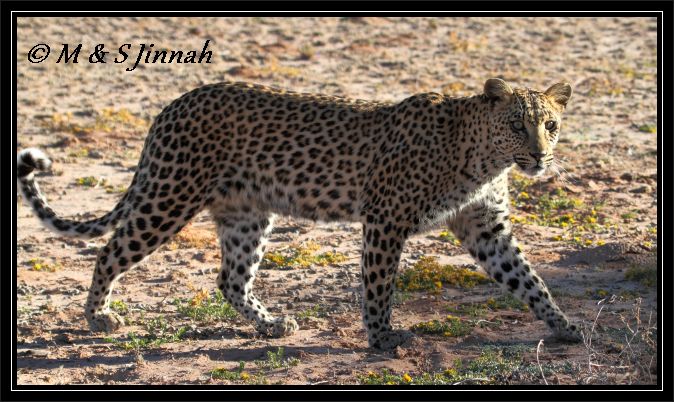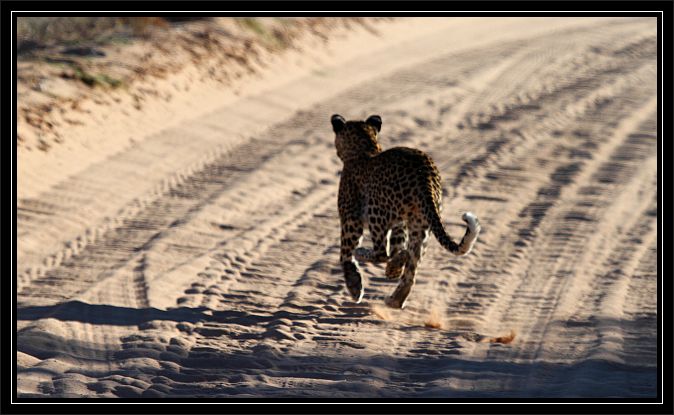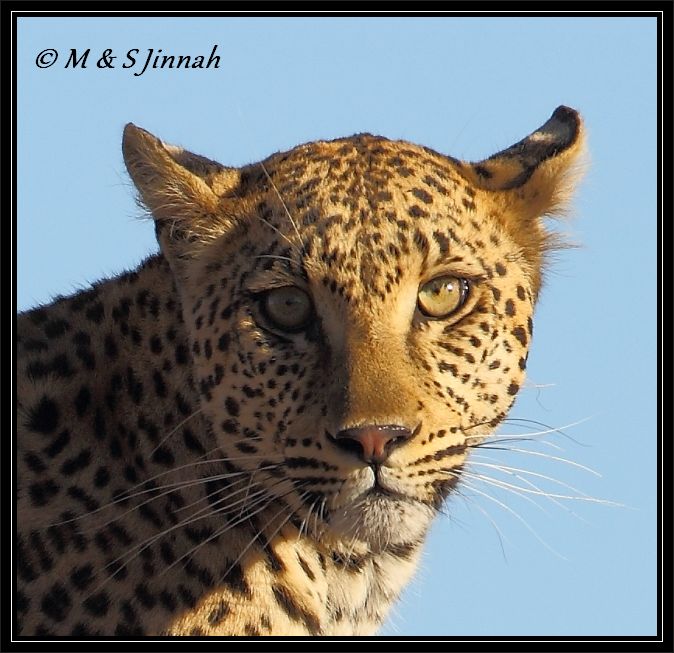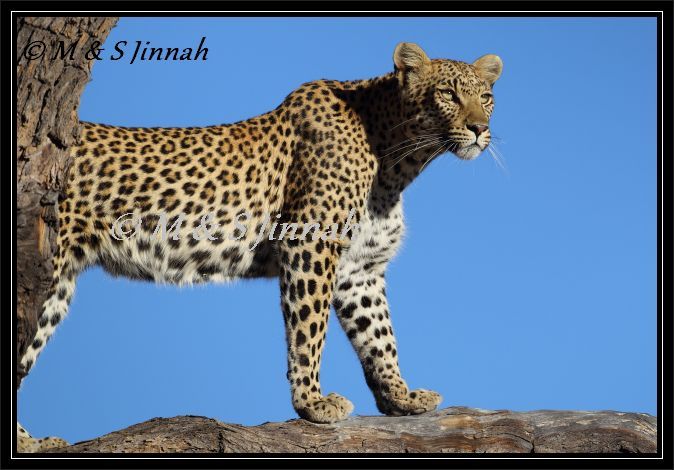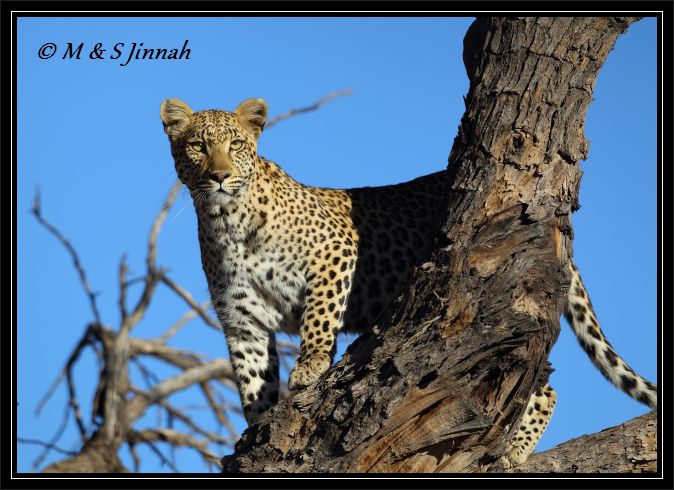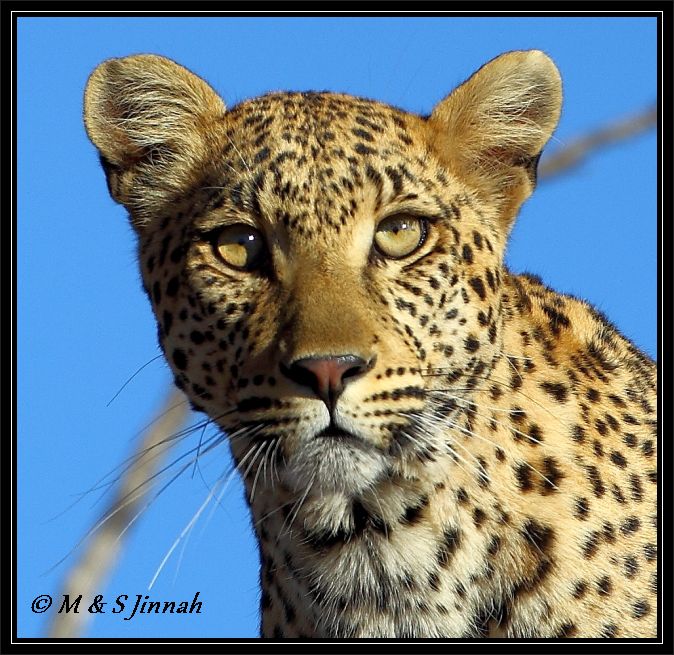Do you know the Song "You Can't Catch Me" by Chuck Berry
Now you can't catch me, baby you can't catch me
'Cause if you get too close, you know I'm gone like a cool breeze
Tsamma could only watch as the AWC took off


You said it Tsamma, Cats Can Fly

 When you get too close, I'm gone like the cool breeze
When you get too close, I'm gone like the cool breeze
 So I let out my wings and then I blew my horn
So I let out my wings and then I blew my horn
Bye bye Tsamma, I've become airborne

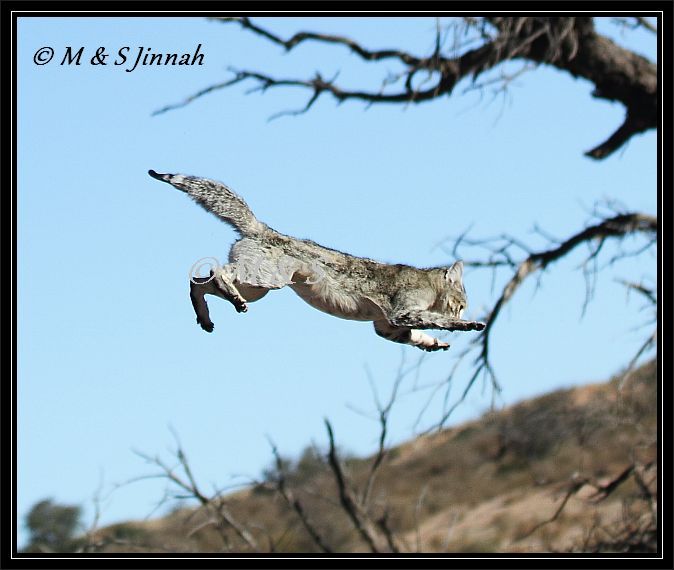
We estimated the tree to be about 12 meters. Look at those legs absorbing the shock


and in the same motion the AWC was gone





Although, Tsamma came flying down herself


She was no match for the Kitty Cat



Tsamma raced after the AWC and by the time we reached them the AWC had disappeared over the dune with Tsamma still on the chase

 No You Can't Catch Me Tsamma
No You Can't Catch Me Tsamma
So how did the AWC do that



From the moment they're in the air to the instant after they hit the ground, cats' bodies are built to survive high falls, scientists say.
They have a relatively large surface area in proportion to their weight, thus reducing the force at which they hit the pavement. Cats reach terminal velocity, the speed at which the downward tug of gravity is matched by the upward push of wind resistance, at a slow speed compared to large animals like humans and horses.
For instance, an average-sized cat with its limbs extended achieves a terminal velocity of about 60mph (97km/h), while an average-sized man reaches a terminal velocity of about 120mph (193km/h)
Cats are essentially arboreal animals: when they're not living in homes or in urban alleys, they tend to live in trees. Cats can also spread their legs out to create a sort of parachute effect, although it is unclear how much this slows the rate of descent.
"They splay out their legs, which is going to expand their surface area of the body, and that increases the drag resistance," When they do land, cats' muscular legs - made for climbing trees - act as shock absorbers. "Cats have long, compliant legs," "They've got decent muscles. In that they're able to jump quite well, the same muscles divert energy into decelerating rather than breaking bones."
The springy legs increase the distance over which the force of the collision with the ground dissipates, "The impact forces are much higher in stiff collisions,". "If they can increase the collision time over a longer period, that reduces the impact force."And a cat's legs are angled under the body rather than extended downward, like human or horse legs."You're not transmitting the forces really directly," .
"If the cat were to land with its legs directly under him in a column and hold him stiff, those bones would all break. But they go off to the side and the joints then bend, and you're now taking that energy and putting it into the joints and you're getting less of a force at the bone itself."
Referencd from
Here
We Just sat there for about 5 minutes neither of us saying anything. We could hear Tsamma rasping and the AWC had got away - she deserved too and it will not even cost her a life

All nine still intact



LOL at your 'come to Mamma Tsamma!'

Not likely during the day and the other animal would be a springbock which is not that interesting.








